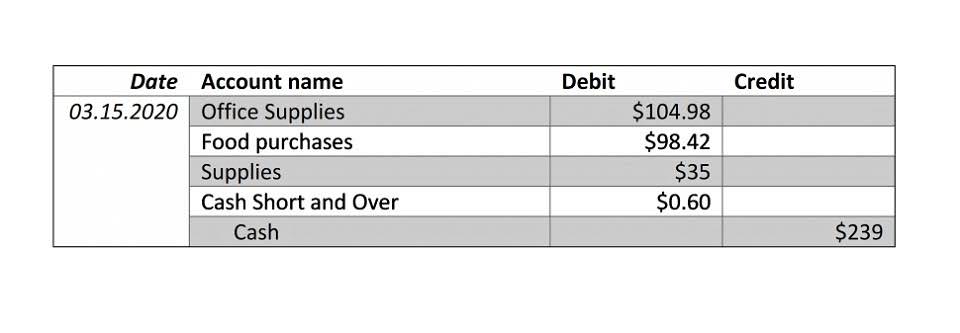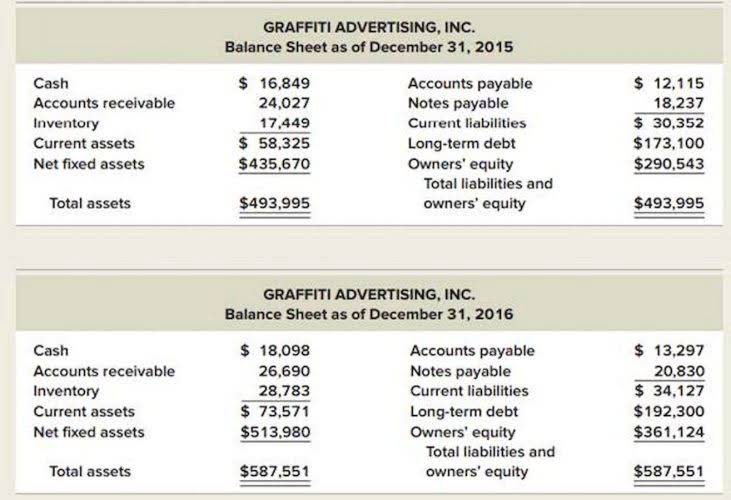Content

The company provided service to the client; therefore, the company may recognize the revenue as earned , which increases revenue. Service Revenue is a revenue account affecting equity. Revenue accounts increase on the credit side; thus, Service Revenue will show an increase of $5,500 on the credit side. When the company issues stock, stockholders purchase common stock, yielding a higher common stock figure than before issuance. The common stock account is increasing and affects equity.
Debit BalanceIn a General Ledger, when the total credit entries are less than the total number of debit entries, it refers to a debit balance. A debit balance is a net amount often calculated as debit minus credit in the General Ledger after recording every transaction. When moving each entry to a general ledger, keep the information the same. This can help reduce confusion, resulting in a clear and correct ledger. Manually type the transaction entries into the general ledger, which should have accounts that encompass your entries.
Understanding the 8-Step Accounting Cycle
Accounts Receivable has a credit of $5,500 (from the Jan. 10 transaction). The record is placed on the credit side of the Accounts Receivable T-account across from the January 10 record. This is posted to the Cash T-account on the credit side beneath the January 14 transaction. Accounts Payable has a debit of $3,500 (payment in full for the Jan. 5 purchase).

An accountant records transactions with debits and credits. A general rule of posting is that both credited and debited entries must be equal when an accountant posts them in the general ledger.
Best practices for posting in accounting
One of the main duties of a bookkeeper is to keep track of the full accounting cycle from start to finish. The cycle repeats itself every fiscal year as long as a company remains in business. Transfer the debit and credit amounts from your journal to your ledger account. When posting journal entries to your general ledger, do not change any information. For example, if you debit an account in a journal entry, debit the same account in your ledger. This is posted to the Cash T-account on the debit side. You will notice that the transactions from January 3, January 9, January 12, and January 14 are listed already in this T-account.

Journals posting to the VAT on Purchases Holding will not be reflected on your VAT Return. The General Ledger which is ready to receive your postings from the Sales Journal.
Management Accounting
At last, their balances are validated by a trial balance. The data is segregated on basis of type, into accounts for liabilities, assets, revenue, expenses and owner’s equity. The format has two sides namely debit and credit with the date of transaction, account by which it is debited or credit, the JF note and respective amounts. Proving that recorded financial entries are correctly written in the accounting journal simply requires another look at all of the receipts received during the year.
- After you summarize the journals for your business and develop the entries you need for the General Ledger, you post your entries into the General Ledger accounts.
- There are usually eight steps to follow in an accounting cycle.
- Prepare Sun Ltd.’s account in Ted Ltd.’s books of ledger.
- Posting means a process in which all information in the journal is transferred to the relevant ledger accounts.
- Calculate LaDanion’s return on assets and return on equity ratios.
- If they don’t balance, your books and financial statements will be inaccurate.
This is placed on the debit side of the Salaries Expense T-account. The customer does not pay immediately for the services but is expected to pay at a future date. This creates an Accounts Receivable for Printing Plus. The customer owes the money, which increases Accounts Receivable. Accounts Receivable is an asset, and assets increase on the debit side. Dividends distribution occurred, which increases the Dividends account.
Explore Business Topics
Ideally, this account also has a debit balance that indicates the amount still due from customer purchases. A journal is used for recording non-regular transactions, for example, the depreciation of a fixed asset or writing off a bad debt.
What is OB52 used for in SAP?
OB52 – Maintain posting period control through authorization group. post in period maintained in posting period 2. is for all other users.
Point of sale technology can help to combine steps one and two, but companies must also track their expenses. The choice between accrual and cash accounting will dictate when transactions are officially recorded. Keep in mind that accrual accounting requires the matching of revenues with expenses so both must be booked at the time of sale. In contrast to the two-sided T-account, the three-column ledger card format has columns for debit, credit, balance, and item description. The three-column form ledger card has the advantage of showing the balance of the account after each item has been posted. It is very important for you to understand the debit and credit rules for each account type or you may not calculate the balance correctly.
Posting only transfers the total balance in a subledger into the general ledger, not the individual transactions in the subledger. An accounting manager may elect to engage in posting relatively infrequently, such as once a month, or perhaps as frequently as once a day. Before an accountant can post an entry to a general ledger, they begin by creating journal entries.
Step 7: Financial Statements
Let’s look at the journal entries for Printing Plus and post each of those entries to their respective T-accounts. Paying a utility bill creates an expense for the company. Utility Expense https://www.bookstime.com/ increases, and does so on the debit side of the accounting equation. The company did not pay for the equipment immediately. Lynn asked to be sent a bill for payment at a future date.

Overall, determining the amount of time for each accounting cycle is important because it sets specific dates for opening and closing. Once an accounting cycle closes, a new cycle begins, restarting the eight-step accounting process all over again. The locations in which recorded and posted numbers are placed by accountants are completely separate. When a financial transaction occurs, it is recorded in the accounting journal under the appropriate section.
The Posting Process
You must ensure that all post menu selections are routed to the same job queue and that the job queue only allows one job to process at a time. I am trying to build a chart of account for a construction company. I would like to know about declaring one account into another account and I heard this is sometimes done by taxation professional, they declare salary to procurement to be charged less. For example, Accounts Receivable may be made up of subsidiary accounts such as Accounts Receivable – Customer A, Accounts Receivable – Customer B, Accounts Receivable – Customer C, etc.
- You notice there are already figures in Accounts Payable, and the new record is placed directly underneath the January 5 record.
- The information that has already been recorded in the journal is just transferred to the relevant ledger accounts in the general ledger.
- An undefined account number was not set up prior to posting, or it does not meet the model account criteria to be automatically created by the system.
- For example, if a company bought the same type of equipment two different times, it’s beneficial to include the date to know when the company made each purchase.
- Therefore, Accounts Receivable will increase for $5,500 on the debit side.
- To post to general ledger, you must use double-entry bookkeeping.
A liability account increases on the credit side; therefore, Accounts Payable will increase on the credit side in the amount of $3,500. Thus, the balance at which they end at in the previous accounting period is the balance that is carried forward to the next accounting period on the first day. This entering of balance in the next accounting period is called opening entry. The next step includes calculating the overall figures of both sides for each ledger account. As a result, posting accounting definition gives a clear picture of the progress or downfall in the specific ledger and decisions can be made respectively.
This means when you move your entries into the ledger, they go into different accounts. For example, all property-related entries should go into a property account and all equity entries should go into an equity account. Liability and Equity accounts usually carry credit balances because Liability accounts show claims made by creditors , and Equity accounts show claims made by owners . Journals are used to move values between ledger accounts that do not affect customers, suppliers or the bank account.
- You can calculate the sums by hand, or you can use a program to do this for you.
- Along with the above perks, posting entries to the general ledger helps you catch accounting mistakes in your records.
- At last, their balances are validated by a trial balance.
- It consists of the date, the name of accounts affected LF note , debit and credit amounts.
- A general ledger is a record-keeping system for a company’s financial data, with debit and credit account records validated by a trial balance.
- This report shows the standard, actual, completed, and outstanding balance amounts by cost component and item for your completed work orders.
When calculating balances in ledger accounts, one must take into consideration which side of the account increases and which side decreases. To find the account balance, you must find the difference between the sum of all figures on the side that increases and the sum of all figures on the side that decreases. It is a good idea to familiarize yourself with the type of information companies report each year.
Summary Definition
Dividends is a part of stockholder’s equity and is recorded on the debit side. This debit entry has the effect of reducing Posting in Accounting stockholder’s equity. Printing Plus has not yet provided the service, meaning it cannot recognize the revenue as earned.
Posting balances are exercised to track the records and can be easily called for. They support cross-verification and ensures arithmetical accuracy which can be rechecked.
Without Journal Entries
You will need to post the totals of these columns to the appropriate accounts in the general ledger . Using your knowledge of the double-entry bookkeeping system, you will need to determine whether you post on the debit or the credit side of the ledger. Five of these postings will be on one side and one on the other side and this must keep the ledger in balance. If you’re using Xero as your accounting software, this posting method generates a summary invoice, rather than asales receipt. You still map your Lightspeed Retail item categories, but you map them to income accounts, rather thanitems. This posting method summarizes your daily sales activity as a single sales receipt.
Each account type can have various sub-accounts within them. For example, assets may include checking or saving accounts. This means you have an increase in the total amount of gas expense for April. Let’s look at one of the journal entries from Printing Plus and fill in the corresponding ledgers. Printing Plus did not pay immediately for the supplies and asked to be billed for the supplies, payable at a later date. This creates a liability for the company, Accounts Payable.
